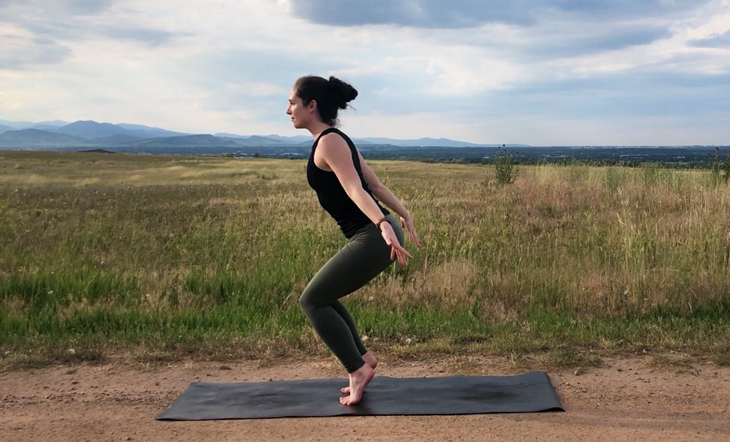7 Comforting Thoughts That Helped Me Build Self-Confidence
“Today I want you to think about all that you are instead of all that you are not.” ~Unknown I had done it again. I had managed to talk myself out of doing something because I wasn’t completely certain...


“Today I want you to think about all that you are instead of all that you are not.” ~Unknown
I had done it again.
I had managed to talk myself out of doing something because I wasn’t completely certain I would be successful at it.
I was an expert at sidelining myself—keeping myself from going after the things I truly wanted. I knew, by heart, all the reasons I wasn’t good enough to achieve my goals in life. I had subconsciously decided that my own personal growth and success weren’t worth the risk of failure or rejection.
As a result, I remained stuck, stagnant, and unhappy.
Any time an opportunity came up, my initial feelings of excitement and motivation quickly gave way to a stream of thoughts filled with self-doubt, what-ifs, and fear of failure. In other words, an utter lack of self-confidence that stopped me in my tracks.
This time, I had talked myself out of applying for a promotion at work. I wasn’t completely sure I was qualified for the job. I was afraid management would believe I was an idiot for applying.
I was successful but bored in my current job, and wanted a new challenge. But what if I wasn’t selected? What would my co-workers think? What if I did get selected and failed at the new job?
At the time, the potential pain of rejection or failure I could experience outweighed the very real pain of staying put in my boring, stagnant job. So that’s what I did. I didn’t apply for the promotion and instead chose to stay stuck in a job I didn’t like.
Eventually, I admitted to myself that I was desperate to gain the confidence I needed to move forward toward my goals. I decided to try working on my mindset to build the confidence I craved. I had failed to take mindset and thought work seriously in the past, but thought it was worth a try.
With time, effort, and guidance, I developed a strong sense of self-confidence. I grew to believe in myself, no matter what. Once I cultivated self-confidence, I dramatically shifted my career path.
Confidence Versus Self-Confidence: What’s the Difference?
Confidence is a feeling of certainty in your abilities based on your past experiences. Self-confidence is a feeling of security in yourself. A strong sense of self-confidence can help you pursue your goals, navigate social situations, try new things, and overcome challenges and failures.
How I Built Self-Confidence: Choosing to Believe
The most helpful thing I learned on my journey toward self-confidence is that believing my thoughts is optional. This means that I don’t have to buy into every thought my brain comes up with, and that I can choose thoughts that I want to believe instead.
Beliefs are simply thoughts that we think over and over. By intentionally choosing and practicing a few key thoughts, I was able to build beliefs that cultivated a strong sense of self-confidence.
If you have deeply engrained beliefs from past experiences, you might need to work on uncovering, examining, and questioning those beliefs before you’re able to adopt new ones. For example, if you grew up hearing that you’re a failure, you might have a hard time believing you can succeed at anything. Once you recognize the root of this belief, however, you’ll be free to work toward letting it go.
This isn’t about “thought swapping” or forcing ourselves to think positively. It’s about recognizing when we’re feeding into old beliefs that don’t serve us and telling ourselves more empowering stories about ourselves, our worth, and our capabilities.
Remember that this is a process—more like turning a ship, not flipping a light switch.
Here are seven beliefs I developed, and why each is so powerful on the journey toward self-confidence.
I am whole, worthy, and complete, exactly as I am today.
Why it’s powerful: It eliminates the notion that I need to “fix” anything about myself and validates who I am in this (and every) moment. It helps me stop comparing myself to others, and places value on who I am as a person.
I can handle whatever comes up.
Why it’s powerful: It quells second-guessing and helps me trust myself to make the best decision I can in the moment. It quiets self-doubting thoughts and “what-ifs” that pop up in my brain.
Not everyone will like me, and that’s okay.
Why it’s powerful: It normalizes and neutralizes rejection. It quiets the need for external validation and reduces the temptation to worry about what others think.
I choose to love myself, no matter what.
Why it’s powerful: Self-love is no longer conditional on success, achievement, or social validation. Fear of self-punishment or self-criticism for mistakes or failures is negated.
I am worth the hard work it will take to achieve my goals.
Why it’s powerful: It puts the focus on my inherent value. It removes the temptation to give in to distractions or take the easy way out when things get tough.
I get to decide what failure means about me.
Why it’s powerful: It rejects the notion that failure automatically means something negative about me. It provides the opportunity to make failure mean something that serves me in moving forward, rather than getting stuck or giving up.
This circumstance won’t matter in a year.
Why it’s powerful: It provides a long-term perspective on a disappointing or uncomfortable moment in time. It gives me permission to move forward from mistakes and failures.
How My Life Changed After Practicing These Thoughts
Once the thoughts above became beliefs, my relationship with myself shifted dramatically. I no longer felt the need to hold myself back. I was willing to reach outside of my comfort zone, try new things, and even fail.
Truth be told, I never did apply for the promotion I had talked myself out of. Instead, I started my own business—a side hustle, at first. Eventually, I left my day job to run my business full-time, which took a lot more self-confidence than applying for the promotion would have.
Self-confidence has impacted my life in so many ways, beyond starting my own business. It has helped me to overcome shyness, drastically reduce my tendency toward self-criticism, and keep pursuing my goals, even when things get tough.
Putting New Thoughts into Action
A final tip to adopt beliefs that build self-confidence is to take actions that support the beliefs you’re working to build. Thoughts generate feelings, feelings generate actions, and actions can reinforce thoughts. Taking actions that support the beliefs you’re working to build will help reinforce those beliefs.
For example, if you’re working on adopting the belief that you can handle hard things, put yourself outside your comfort zone and give yourself an opportunity to stretch and impress yourself.
Conclusion
Self-confidence doesn’t come easily or naturally to everyone, but you can build it with time, effort, and patience. Practicing self-confident thoughts consistently is key. Practice self-confident thoughts each day by putting a reminder on your phone, a note near your computer, or even writing them in dry erase marker on your bathroom mirror.
Start building your self-confidence by choosing one thought to begin practicing today. You can choose one of my thoughts above or create your own. Either way, your future self will thank you. Self-confidence is one of the greatest gifts you can give yourself.
![]()
About Amy Schield
Amy Schield is a certified professional life coach. Her practice focuses on helping clients build self-confidence, achieve their goals, and turn their big list of “I shoulds” into “I dids.” Acting as a personal trainer for the brain, she uses a mix of simple tactics and neuroscience-based strategies to help clients make lasting changes in the areas of self-criticism, confidence, self-trust, and taking bold action.
See a typo or inaccuracy? Please contact us so we can fix it!

 KickT
KickT 
































